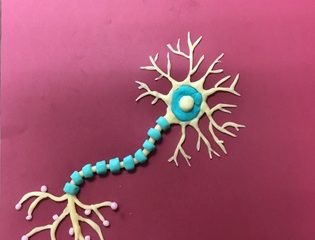
One of the challenges of modern living is the need to make ethical decisions about emerging technologies. In many cases, the technology is up and running long before we figure out how best to use it.
The stem cell bill that President Bush just vetoed would have allowed the National Institutes of Health to fund research using stem cell lines developed after 2001. Is that sufficiently confusing?
Let’s back up a bit. First of all, a stem cell is an undifferentiated cell that can divide and differentiate into other cell types. Consequently, researchers are very excited about the potential of growing replacement cells for damaged tissues, such as in cases of spinal cord damage.
Not all stem cells are equal. There are three main sources today for stem cells–adult stem cells, cord blood stem cells, and embryonic stem cells. It is the latter type that is controversial. These are harvested from the blastocyst stage of the embryo, about 5 days following conception.
In 2001, President Bush signed legislation that would provide federal funds for research using stem cell lines already in existence, since these embryos had already been destroyed, but would not fund research requiring the destruction of additional embryos. The National Institutes of Health (NIH) funded 607 million dollars of stem cell research in 2005.
Some researchers argue that this is unnecessarily restrictive, and that their research is hindered by the inability to study new cell lines.
What happens to unused embryos from in vitro fertilization? In most cases, a clinic will produce 7 or 8 embryos, when only 2 or 3 will be implanted. The couple must notify the clinic about their wishes for the remaining embryos. They can remain frozen for future use, donated to another couple, or destroyed. Only about 2 percent are donated, although President Bush’s press conference featured a number of children who had been “adopted” as embryos.

The issue of using embryos sharply divides pro-life individuals. The Catholic Church argues that embryonic stem cell research violates the sanctity of life. Others, including former first lady Nancy Reagan, oppose abortion but support embryonic stem cell research.
The bottom line is that the research is happening. The extent and type of participation by the federal government is all that is at issue.
Meri Firpo, now at the University of California, San Francisco, is researching ways to make new insulin-producing cells for treating diabetes. While at the University of Minnesota, she ran two separate labs that did the same research–one uses NIH money for research with approved cell lines, and the other was run with private funds. Such machinations are frustrating for many researchers.
Others worry that an emphasis on embryonic stem cell research leaches money away from promising work with cord and adult stem cell sources.
The United States is not alone with this controversy. Countries with large Catholic populations (Germany, Austria, Ireland, Italy, and Portugal) have outlawed embryonic stem cell research. Other European nations (Sweden, Finland, Greece, Great Britain, and the Netherlands) allow it. Japan, India, South Korea, Brazil, South Africa, and China are supportive. With the exception of Brazil and South Africa, South American and African countries are restrictive. New Zealand is restrictive, and Australia is mixed. One of the obvious fears is that further restrictions in the United States will produce a brain drain of scientists seeking more generous funding elsewhere.
In the meantime, Americans are following the stem cell debates more closely, although there is significant evidence that many do not fully understand the basis of the debate. “Don’t know” responses are very high in surveys about stem cells, according to Public Agenda.



1 Comment
Laura’s Psychology Blog » Further twists to the stem cell debate… · September 25, 2006 at 7:46 pm
[…] In an earlier post, we tried to untangle some of the ethical issues surrounding the use of human embryonic stem cells (hESCs). […]
Comments are closed.